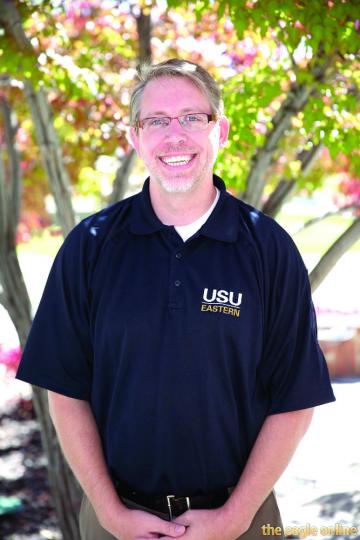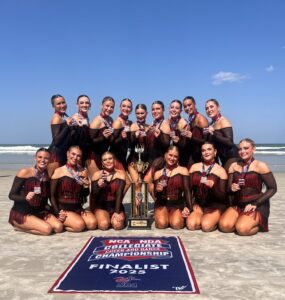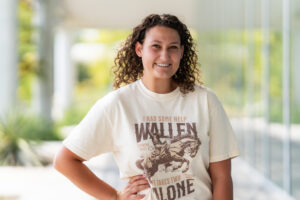Olsen talks enrollment goals

This archived article was written by: Jonathan Fox
Utah State University Eastern launched an ambitious growth campaign in the fall of 2012. The ultimate goal was to reach an enrollment of 4,000 students by the fall of 2017. One year into that goal, the college began the semester with 2,130 students enrolled, a 13 percent increase. The goal for this past year’s growth was 15 percent, but in light of the year’s events, namely the LDS Church’s changing the eligible missionary age to 18 from 19, it was still a great success. Next year’s goal is to hit 2600 students.
“We increased enrollment by 283 students,” says Kristian Olsen, the director of enrollment services, “it was the biggest increase in the state. Actually, everyone else saw a decrease in enrollment. Snow saw .03 percent increase, but we increased 13
percent. When everyone else was decreasing, we increased.”
What made the difference was a change in tactics. In August of 2012, a new enrollment team was hired. Greg Dart, Kevin Hurst and Wade Arave were hired to draft and execute an aggressive recruitment plan. It was significant because it was a restructuring of the way recruitment was done at the university.
“Last year, they added this great team, this fantastic team. And that team was able to get it to rebound,” says Olsen, “but to hit our goal for enrollment next year, we need to do better even than this year, we need to increase by about 18 percent. We need an increase of 470 students.”
“Greg Dart and his team were a great team. They really got the ball rolling,” he says, “so what we need to do is just take what they were doing, and put it on steroids a little bit. the number one thing that we need to do this year is get us in front of more students.” To accomplish that, Olsen outlined his plan.
“While Kevin’s departure was a challenge to us, it gave us the opportunity to hire some part-time people to fill his role while we are searching for his replacement.”
There are two new part-time hires. One who lives on the Wasatch Front, and one who lives in Southern Utah. Their job is to be constantly visiting the high schools throughout the state.
“Every single day, they are going to be in a different high school,” Olsen said.
The plan is for the ambassador team and the recruiters to hit every high school before May.
“We did that last year, but this year we have got 35 schools that we are going to focus on,” Olsen says, “They are the priority schools. We are going to work to be in those schools at least 5-8 times between now and then.”
The benefit of high school visits is that not only will enrollment increase as a result for this coming year, but also for the next year as well.
“What will happen is in those schools, we will be meeting with sophomores and juniors who will later be juniors and seniors,” Olsen says, “so what we are really trying to do is build up our presence in these high schools that will pay off not only this year, but in 2015 and 2016 as well.”
Other elements of the plan to meet that 18 percent include meeting regularly with high school counselors to build relationships with them.
“Another thing we are doing,” says Olsen, “is working with faculty on campus to develop departmental recruiting plans to help them reach specific types of students that they would like to see in their programs.”
Olsen says they are focusing one program at a time to develop a recruitment plan and to support their getting into high schools to build relationships with the corresponding programs at those schools.
The ambassadors are a big part of the success of the growth of the university. Each ambassador is assigned three high schools to visit each semester. At each high school, the ambassadors take applications and waive application fees for students who apply when they are visiting. Also they invite students to come to an Eagle Experience, an overnight stay where they have a tour of campus and attend an activity.
“The ambassadors can connect better with high school students,” says Olsen, “because they aren’t so long out of high school themselves.”
“Eighteen percent is daunting,” he admits. However, he is determined to reach that goal. He has a plan and he has a great team to help him.




